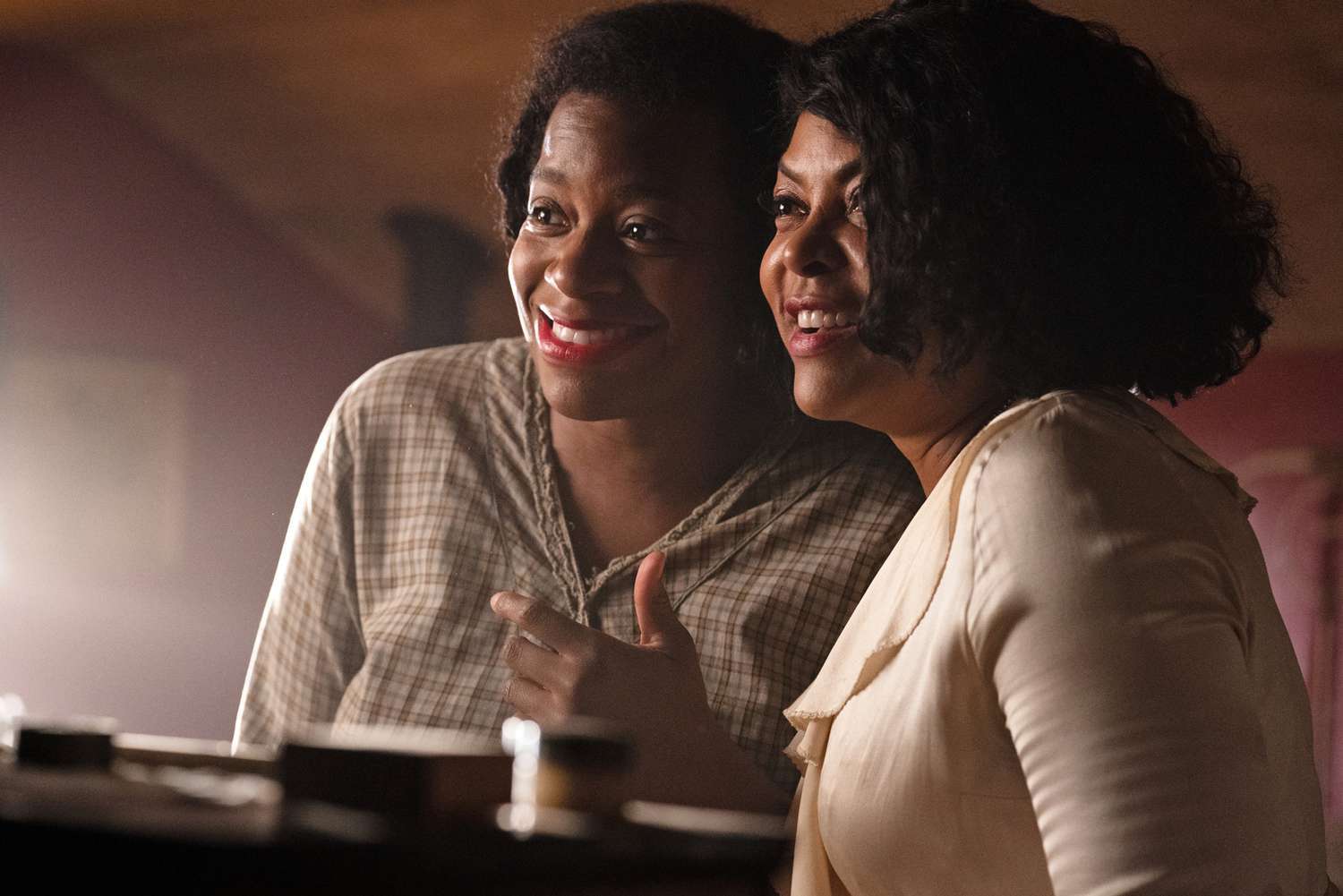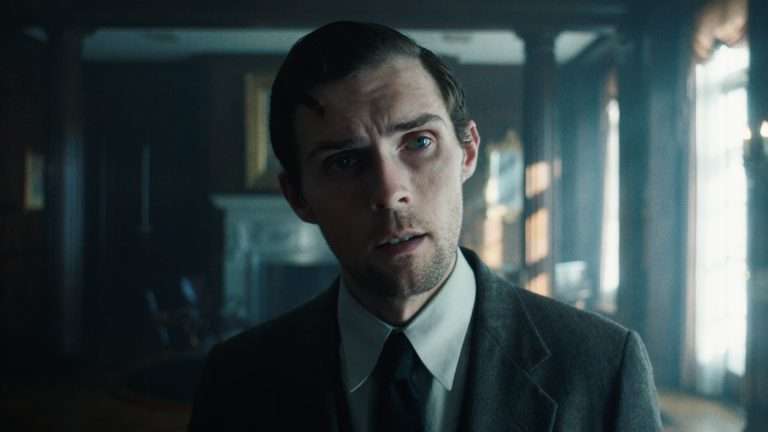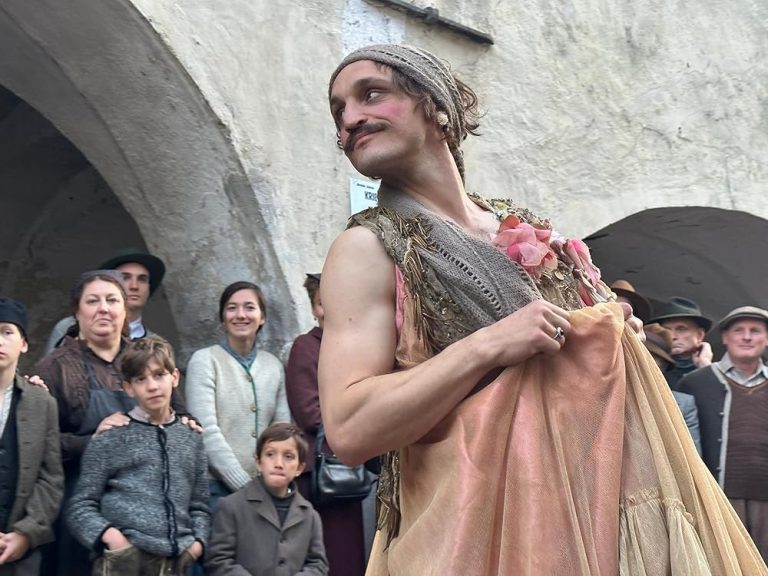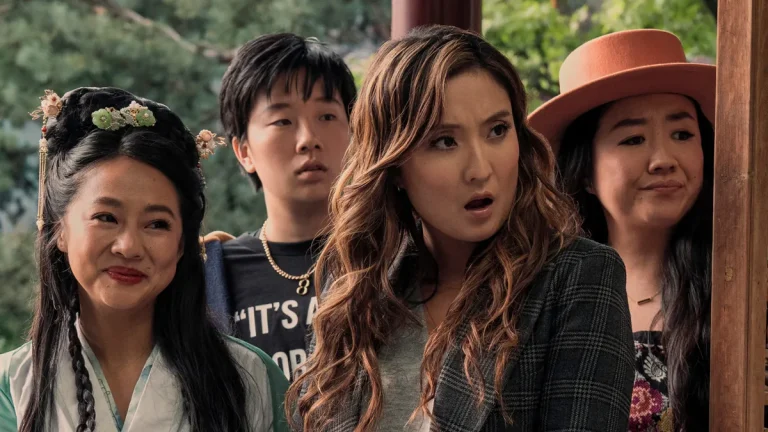Blitz Bazawule’s directorial, “The Color Purple,” is a musical adaptation of Alice Walker’s Pulitzer-winning 1982 eponymous feminist classic. There are few apparent things it shares in spirit with Steven Spielberg’s film, but Bazawule makes vital course corrections, paying heed to criticism received by the former and consequently adding a timely update.
The Color Purple (2023) Plot Summary & Movie Synopsis:
We are introduced to the two Black sisters, Celie and Nettie, growing up on the Georgian coast in the early 1900s. They are each other’s best friends, offering comfort and emotionally shielding the other from their abusive father, Alfonso. Alfonso usually targets Celie, getting her pregnant twice and giving away her kids purportedly to the Church. Nettie is spared his abuse because she is more determined and resistant than her sister, who is meeker and believes in subservience because she doesn’t consider herself pretty.
Alfonso marries Celie off to Mister, who initially came seeking Nettie’s hand. Mister has three kids from his previous wife, and as soon as Celie enters her new setting, she is made aware she has arrived in another hell, with her husband subjecting her to a daily diet of abuse and intimidation. One day, Nettie arrives at Celie’s house, requesting to stay there since their father tried to abuse her as well. Respite is brief as Mister also soon targets Nettie. When she rejects his advances, Mister throws her out of the farmland, forbidding Celie from keeping in touch with her sister. The sisters promise to write to each other but as the years pass, Celie receives no letter. She assumes Nettie is dead, being unaware her husband has been hiding Nettie’s letters.
Who are the women who bolster Celie’s search for autonomy?
Mister’s son, Harpo (Corey Hawkins), gets married to Sofia, who is pregnant with her child. Harpo hadn’t intended to make Sofia meet his parents, but Sofia, a force of nature, forces him to submit to her wishes. She makes him build a house for him when Harpo’s father insists Sofia will not be permitted inside his house. Harpo is exasperated with Sofia’s defiant attitude and seeks Celie’s instruction. Celie orders him to beat Sofia, which will tame her. Sofia, who had thought of Celie as a friend and had emboldened her to take charge in her life, is deeply disappointed in her and immediately leaves Harpo, categorically stating she will not bear any man’s whim upon her.
Celie finds another plank of support in Shug Avery (Taraji P. Henson), a popular blues singer who was Mister’s former girlfriend. Mister still yearns for Shug. Shug arrives in town and stays with the couple. Celie isn’t perturbed by the intimacy between Shug and her husband; instead, Shug and she get along excellently. Shug’s vibrancy offers her a vision of her own liberation. Harpo, meanwhile, has started going out with Mary Agnes and converted the house he’d built for Sofia and him into a jukehouse. Shug’s performance is a success, but Sofia comes too, and a fight erupts between Mary and her. Shug and Celie sneak out to catch a film, and the two get close that night. Shug also helps Celie discover Nettie’s letters that detail how Nettie had been working with the Christian missionaries in Africa. Celie is finally able to write back to her sister.
The Color Purple (2023) Movie Ending Explained:

Does Celie reunite with her sister and her kids?
Meanwhile, Sofia’s spirit got crushed after she landed in jail for hitting the mayor, who hit her first, when she refused to work as their maid. When Shug returns to take Celie along on her way to take her and show her the world, Celie and her husband have a confrontation as he states she cannot leave. She stands up to him and tells him she has had enough of him, furious with him for hiding her sister’s letters. He hurls all kinds of slurs at her as she leaves, and she returns them with her curse, wishing him a collapse of everything he has built until he does right by her.
Soon, Mister has to burn his farmland to stave off the infestation. Celie discovers Alfonso wasn’t her real father. Her real father left her the childhood house and shop. Celie turns it into a dress shop and inches close to her long-overdue freedom. Mister realises his wrongs, sells off his farmland and ensures Nettie and Celie’s children get their citizenship rights as they move back to America. At the annual lunch hosted by her dress shop, Mister makes Celie reunite with her sister and her kids, who are now married with their own children. For all its bleakness, the film ends on a note of positivity and self-affirmation.
The Color Purple (2023) Movie Review:
The narrative of The Color Purple has sorrow and brutality in its bones. Spanning nearly half a century of early 20th century America, the tale of Black female experience obviously lends itself to gut-wrenching material but there is always a surging force of joy and liveliness as a counter that surrounds Celie. Ample horrors are on vivid display as Celie is routinely battered by her husband and forced to lead a life of subordination, solely service his whims and bear the brunt of his wrath.
That her husband never wanted her in the first place serves as a harsh reminder to her every day, which she endures uncomplainingly. She doesn’t utter a word of protest for the longest time till Shug tells her she doesn’t even know her husband’s real name. She has resigned herself to a situation of having zero rights or say in regulating her household. Nor is she allowed to wield any control over her life, which stays firmly in Mister’s tight, unyielding grip. Albert “Mister” has no pity for her nor remorse for his attitude, choosing only to project his intense hate and resentment and showing her she deserves what she is getting, so she’d better accept it.
Fantasia Barrino pours the entirety of her soul into the film. The film is essentially chronicling her character’s journey of selfhood and garnering self-esteem. Celie feels she is not entitled to anything; this is what her husband has stomped down on her with, completely demolishing her spirit. So when she encounters Sofia wilfully defying any overbearing man threatening her, she is startled and admits envy.
Read More: 30 Movies Featuring Characters Trying To Escape The Vicious Cycle Of Poverty
Marcus Gardley’s screenplay continually and quietly suggests how Celie gradually builds reserves of will and autonomy from observing the fiery duo of women who barge into her life with a force she might have assumed women simply had no right to possess. Barrino carries a textured emotional history of her character accruing over decades, slowly acquiring agency and resolve. Bazawule sensitively directs a largesse of tough, aching scenes but always ensures the dignity of his characters is never sacrificed at the altar of narratively ordained misery.
As much as the violence is unflinchingly pushed upfront, there’s an exulting attention paid to establishing a strong bond of solidarity among women, where each empowers and pushes the other ahead to embrace and discover her true, suppressed potential. Taraji P. Henson is stunning, and Danielle Brooks almost sweeps up the film with her fiery grit whenever she pops up. Brooks also gets one of the most show-stopping musical numbers in the film, a giddily exuberant demonstration of women’s resistance against male diktats. At its best, The Color Purple is a dazzling celebration of sisterhood, buoyed by its outstanding triumvirate of actresses.
Is ‘The Color Purple’ based on a true story?
“The Color Purple,” written by Alice Walker, is a work of fiction that delves into the life of Celie, an African American woman in the early 20th century. While the novel itself is not based on a true story, its narrative is deeply rooted in the reality of the time and era in which it is set. The characters may be fictional, but they serve as representations of the struggles and experiences faced by many individuals during that period.
One significant source of inspiration for the novel is Walker’s step-grandmother, Rachel. Celie’s character is loosely based on Rachel’s own experiences, particularly her early marriage to an abusive man and the hardships she endured throughout her life. Walker drew from Rachel’s life to vividly depict Celie’s journey, portraying the challenges of abuse, poverty, and discrimination.
Additionally, other characters in “The Color Purple” are influenced by real people in Walker’s life. Sofia, a resilient and outspoken woman, is inspired by individuals like Miss Sophie and Walker’s mother, Minnie Lou, who faced adversity with strength and determination. Shug Avery, the glamorous singer, and Celie’s lover is based on one of Walker’s aunts who, despite working as a cleaning person, embraced a flamboyant personal style.









